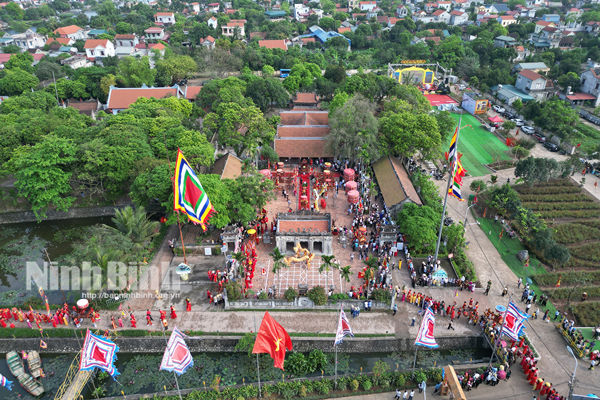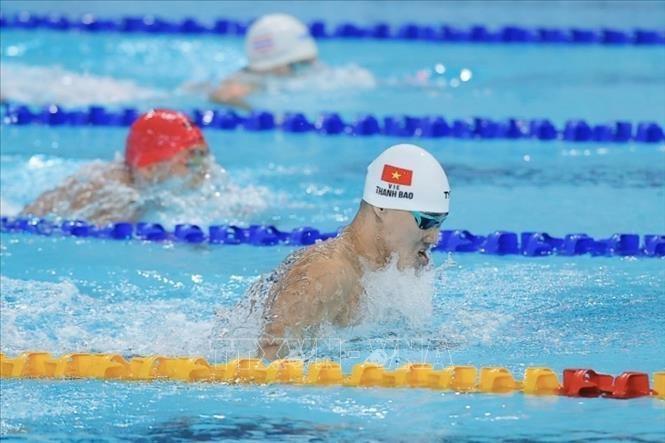A pearl of Vietnam’s tourism
It is no coincidence that Ninh Binh is known as the "pearl of Vietnam’s tourism". Located at the gateway to the North, about 90km from Hanoi, Ninh Binh possesses a strategic geographical location, easily connecting with major tourist centres such as Quang Ninh, Hai Phong and Hanoi. With geographical advantages, Ninh Binh possesses a treasure trove of precious cultural heritage and nature. Currently, Ninh Binh owns 1,821 relics of many types, along with 430 intangible cultural heritages that are vividly present in community life.
The most notable are the Trang An Scenic Landscape Complex – A World Cultural and Natural Heritage - the only dual heritage in Vietnam and Southeast Asia recognised by UNESCO as a typical model of economic development associated with heritage conservation; Cuc Phuong National Park; and Van Long Wetland Nature Reserve... Based on these advantages, for many years, Ninh Binh has been considered a leading attractive destination in the world. The number of tourists to Ninh Binh has increased steadily over the years. In 2024, the province welcomed 8.7 million visitors, including 1.5 million international visitors, with revenue of more than 9.1 trillion VND (350 million USD), the highest level ever. In just the first four months of 2025, Ninh Binh's tourism industry earned more than 6 trillion VND.
However, Ninh Binh province also frankly admitted that cultural tourism is slow to transform into industrial production methods, lacking innovative products that bring high added value; unclear orientations for the development of heritage economy, sports economy, media economy, museum economy; lacking mechanisms and investment resources to transform cultural resources into cultural products.
Failing to attract strategic investors, Ninh Binh is faceing many shortcomings, limitations, and obstacles in investing in the form of public-private partnership (PPP) in the fields of culture, arts, and sports.
To continue to promote the outstanding advantages of tourism as well as overcome these limitations, Ninh Binh has determined to develop cultural industry together with tourism to become a key economic cluster of the province, meeting the requirements of rapid and sustainable development in the new era of national development.
Cultural industry - an inevitable direction
The cultural industry plays an important role in promoting economic restructuring, renewing the growth model, creating jobs, increasing income, meeting consumer demand, improving people's cultural and spiritual life, promoting soft power, and enhancing local brand value.
On February 28, 2025, the provincial Party Committee issued Resolution No. 22-NQ/TU on developing cultural industry sectors in the province for the period of 2025-2035, with a vision to 2050, focusing on a number of key areas such as traditional arts, cinema, and traditional crafts.
One of the highly appreciated steps is to promote preferential mechanisms and policies on taxes and land, allowing the liberation of all creative capacities, the opening of all resources, and the rapid commercialisation of innovative ideas, scientific and technological achievements; create open policies for production, distribution, export, import, and consumption of cultural and entertainment products; propose to loosen licensing conditions for emerging entertainment industries, improve the sports betting market; build a public-private partnership mechanism.
These are important tools to unblock the flow of social capital into the cultural sectors, a long-standing bottleneck.
According to Vice Chairman of the provincial People's Committee Nguyen Cao Son, Resolution No. 22-NQ/TU of the provincial Party Committee on developing cultural and entertainment industries associated with tourism is a strategic step. Ninh Binh is considered by many experts to be one of the first provinces to pay attention to appropriate investment in cultural and entertainment industries.
Sharing about the potential and vision for developing Ninh Binh's cultural industry, Deputy Minister of Culture, Sports and Tourism Phan Tam said the Ministry of Culture, Sports and Tourism has submitted to the Government a draft Strategy for Cultural Industry Development to 2030, with a vision to 2045, clearly identifying priority areas and many groups of industries with development potential, in which cultural tourism is considered the field with the greatest potential for integration and diffusion. Ninh Binh has all the conditions to become a bright spot to implement this model.
For the cultural industry to become a lever for tourism to "take off", Ninh Binh needs to create favourable policies to attract the private economic sector, focusing on digital transformation, digitising heritage, and virtual museums.
Ninh Binh's tourism industry not only focuses on counting the number of visitors and revenue, but also needs to build a set of metrics for cultural tourism development indexes, visitor experience, and resource exploitation efficiency.
With the right strategy, breakthrough policies and synchronous participation from the state-enterprise-creative community, Ninh Binh is gradually developing the cultural industry to not only create material wealth but also contribute to affirming local identity on the international map of cultural creativity./.










